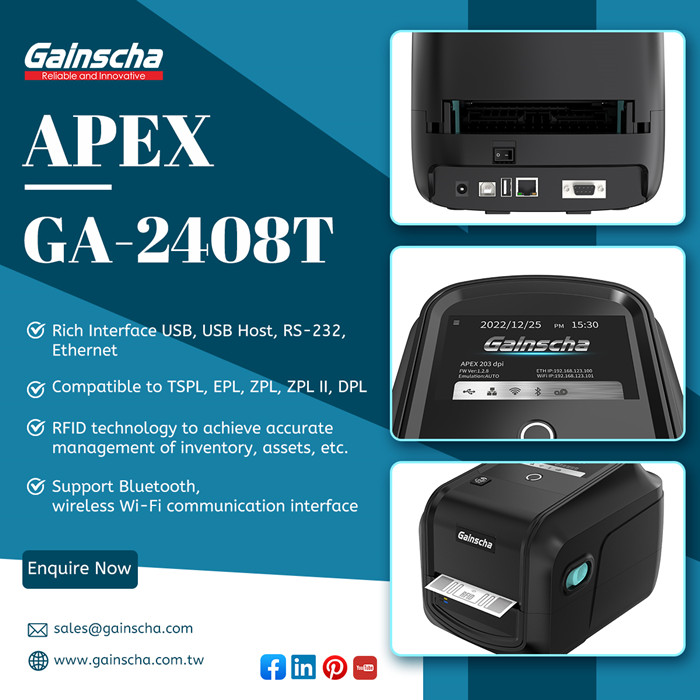Thermal barcode printers have become essential tools for businesses across various industries, offering efficient and accurate label printing for a multitude of applications. However, with the plethora of options available in the market, selecting the right thermal barcode printer can be a daunting task. In this article, we will guide you through the key considerations to help you make an informed decision based on your specific needs.

Understanding Your Printing Requirements
1. Volume of Printing
The first consideration when choosing a thermal barcode printer is the volume of printing you anticipate. If your printing needs are relatively low, a desktop thermal printer might be suitable. For higher volumes, an industrial or commercial-grade printer with faster print speeds and larger media capacity is preferable.
2. Print Resolution
The required print resolution depends on the complexity of your labels. If your labels contain intricate graphics, small font sizes, or high-density barcodes, opt for a printer with higher resolution capabilities. This ensures the clarity and legibility of the printed information.
3. Label Size and Material
Consider the size and material of the labels you need. Different printers accommodate various label widths and lengths. Additionally, the type of labels, such as paper or synthetic materials, may require specific printers. Ensure that the chosen printer can handle the label size and material required for your applications.
Choosing Between Direct Thermal and Thermal Transfer Printing
1. Direct Thermal Printing
Direct thermal printing is cost-effective and straightforward, using heat-sensitive paper to create images. This method is suitable for applications with shorter label lifespans, such as shipping labels and receipts. If your requirements involve temporary labeling and cost efficiency is a priority, a direct thermal printer might be the right choice.
2. Thermal Transfer Printing
Thermal transfer printing, on the other hand, involves using a ribbon to transfer ink onto labels. This method produces more durable and long-lasting labels, making it suitable for applications like product labeling, asset tagging, and inventory management. If durability and longevity are crucial, consider a thermal transfer printer.
Considering Print Speed and Throughput
1. Print Speed
The speed at which a thermal barcode printer can produce labels is an essential factor, especially in high-volume environments. Industrial printers generally have faster print speeds than desktop models. Evaluate your printing needs and choose a printer with a speed that aligns with your workflow requirements.
2. Throughput
Throughput, often measured in inches per second (IPS), indicates the printer's efficiency in handling continuous printing tasks. A higher throughput ensures faster label production. Evaluate the throughput capabilities of different printers to find one that meets the demands of your specific applications.
Ease of Use and Connectivity
1. User-Friendly Interface
Consider the ease of use of the thermal barcode printer, especially if multiple users will operate it. Look for a printer with an intuitive user interface and easy-to-navigate controls. A user-friendly design can streamline the printing process and reduce the learning curve for your staff.
2. Connectivity Options
Check the connectivity options offered by the printer. Most modern thermal barcode printers come equipped with USB, Ethernet, and sometimes wireless connectivity. Ensure that the printer's connectivity options are compatible with your existing systems and network infrastructure for seamless integration.
Cost Considerations
1. Initial Cost
While the initial cost of the printer is an important consideration, it's equally crucial to factor in the total cost of ownership. Consider ongoing expenses such as consumables (labels and ribbons), maintenance costs, and potential repairs. A slightly higher upfront cost for a reliable printer may result in long-term savings.
2. Total Cost of Ownership (TCO)
Evaluate the TCO by considering the printer's lifespan, maintenance requirements, and the cost of consumables. A printer with lower ongoing costs may prove more cost-effective in the long run, even if the initial investment is higher.
Conclusion
In conclusion, choosing the right thermal barcode printer requires a careful assessment of your specific needs. Consider factors such as printing volume, resolution, label size, and material, as well as the choice between direct thermal and thermal transfer printing. Additionally, assess the printer's speed, ease of use, connectivity options, and overall cost to ensure it aligns with your business requirements.
Contact Us for Expert Guidance
If you need further assistance in selecting the right thermal barcode printer or are looking for a reliable supplier, feel free to contact us. Our team of experts is dedicated to providing guidance tailored to your business needs and connecting you with high-quality thermal barcode printers that meet your requirements.









